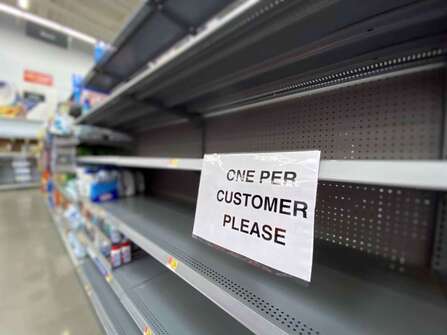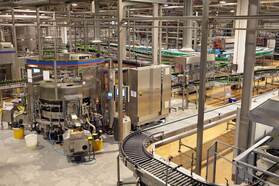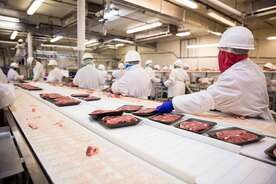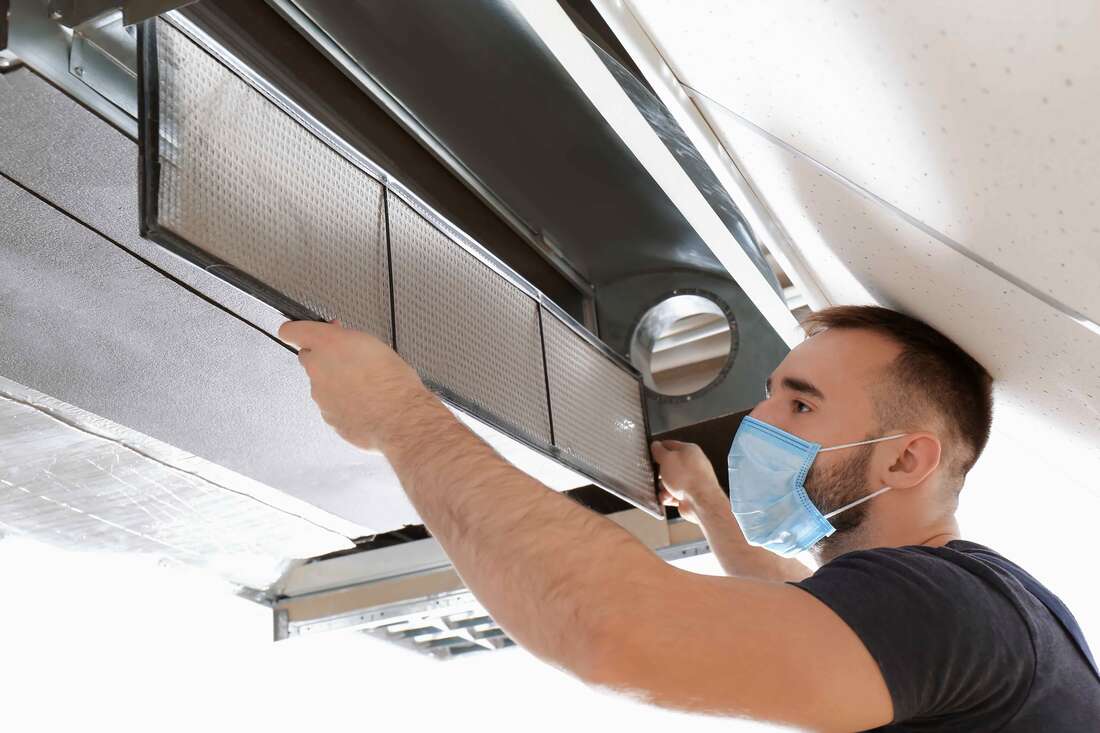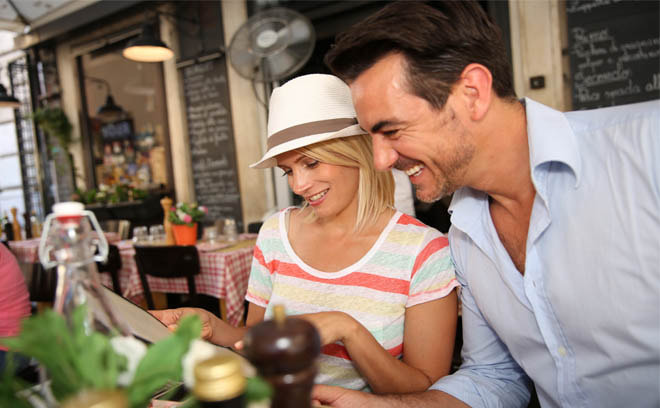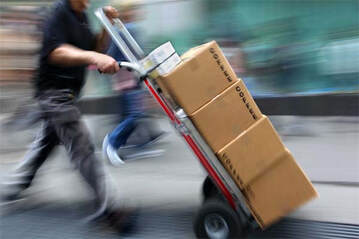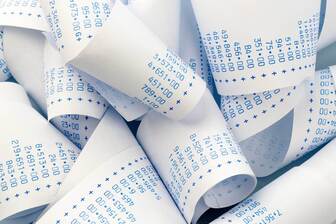Factors Affecting Product Cost and Availability
|
In the middle of March 2020, the entire food industry was hit with a massive shockwave. As restaurants and other outlets that prepare food-away-from-home stopped doing business instantly, consumer volume went directly and immediately to the retail supermarkets. This instant shift of consumer spending resulted in immediate shortages of paper towel, toilet paper, eggs, peanut butter, cereal, pasta, yeast, flour, frozen prepared meals and many more items that we and our families all saw with our own eyes. Behind the scenes, the manufacturers were experiencing their own shock as items that they made almost exclusively for foodservice saw their demand go to zero – items like block cheddar cheese, fresh milk (yes, most milk is purchased by schools), french fries, certain cuts of meat and, of course, foodservice pack sizes of all sorts of product like paper goods, flour, peanut butter and pasta (where 1 pound packages are sold at retail while foodservice product is packed in a 20-pound bulk box).
|
|
As retail purchases spiked and foodservice purchased cratered, manufacturers began to adapt their production schedules to ramp up their output of retail pack products. Now, as the nation begins to take steps to normalize daily life, foodservice sales are beginning to pick up and manufacturers are starting to adapt production schedules to meet the new foodservice volume. The manufacturers are at a decided disadvantage in predicting volumes because each state is opening and relaxing restrictions to their schedule and at their own pace.
|
The factors above resulted in some spot shortages as the pipelines were refilled. The good news is that these shortages were not long in duration. Even better, if you are a member of a GPO, like Team Four Foodservice/Value 4, you have the benefit of your GPO working directly with manufacturers to prioritize the product need of the entire membership.
Building a Better Food System
|
The pandemic has exposed a number of weaknesses in the food system. Now, the USDA plans to invest $4 billion to strengthen it in case similar events occur in the future, according to an announcement in June. “Now is the time to really focus on a system that is not only productive and efficient but also resilient,” U.S. Secretary of Agriculture Tom Vilsack told Fortune.
The USDA plans to use the investment to address current weaknesses in food production, processing and distribution – all while aiming to address climate-related strains and inequity in the food system. Pandemic-related challenges are a key focus: When Covid-19 closed slaughterhouses, small farmers were hurt the most because of a consolidated meat processing system, so some of this investment will go towards helping smaller processing facilities avoid similar business interruptions going forward, for example. It will also help protect against supply chain disruptions and strengthen regional food systems to reduce the need to transport food across long distances. |
|
Beyond weaknesses exposed during the pandemic, the funding will support farmers making the transition to organic farming and assist new farmers looking to establish business. It will also aim to strengthen the connection between food service and food assistance, giving producers greater incentive to connect their products with people who need them. Remember when dairy farmers were dumping an excess supply of milk early in the pandemic, all while there were more people in need of it?
|
Next Steps: Planning for Reopening
May, 4 2020 National Restaurant Association
Put any extra time you have now to work so you’re set to reopen smoothly.

It looks like it’s going to happen — slowly, in fits and starts. Governors and mayors around the country are starting to talk about reopening restaurants for dine-in service, when it can be done, and what it would look like.
For sure, life won’t quickly go back to the way it was before mid-March. California Gov. Gavin Newsom, one of the state leaders working in regional consortia to come up with detailed plans and schedules, suggested a likely scenario:
“You may be having dinner with a waiter wearing gloves, maybe a face mask, dinner where the menu is disposable, where half of the tables in that restaurant no longer appear, where your temperature is checked before you walk into the establishment.”
In other words, it will take some doing to make it all work. Whether your restaurant remained open for takeout and delivery during this period of social distancing, or you closed down entirely, here’s how you can start rebuilding your business.
For sure, life won’t quickly go back to the way it was before mid-March. California Gov. Gavin Newsom, one of the state leaders working in regional consortia to come up with detailed plans and schedules, suggested a likely scenario:
“You may be having dinner with a waiter wearing gloves, maybe a face mask, dinner where the menu is disposable, where half of the tables in that restaurant no longer appear, where your temperature is checked before you walk into the establishment.”
In other words, it will take some doing to make it all work. Whether your restaurant remained open for takeout and delivery during this period of social distancing, or you closed down entirely, here’s how you can start rebuilding your business.
|
Understand the new rules and limitations.
They won’t be the same across the country. Figure out how you can comply. (Your local restaurant association can advise you.) For example:
|
|
Follow established guidelines for reopening safely, with protocols for safe food handling, cleaning and sanitizing, employee health and hygiene, and social distancing. Start with the National Restaurant Association COVID-19 Reopening Guidance.
|
|
Deep clean and sanitize your restaurant.
Hire a specialty service to deep clean every single surface in the front- and back-of-the-house, or have your staff do it. Don’t forget to clean and sanitize the drive-thru station, all POS equipment and staff headsets. Check out CDC guidance and cleaning here. Later, when it’s time to open, you can publicize your efforts — even make a video of it. |
Reconfigure and rethink the dining room.
Even if a minimum distance between tables isn’t mandated in your area, guests will be shy at first about close contact. Space out tables and chairs, even bar stools. You can put barriers between booths. If there’s enough time and money before the reopening, consider freshening your dining room with a new coat of paint.
Even if a minimum distance between tables isn’t mandated in your area, guests will be shy at first about close contact. Space out tables and chairs, even bar stools. You can put barriers between booths. If there’s enough time and money before the reopening, consider freshening your dining room with a new coat of paint.
|
Think about maximizing revenue.
With half as many chairs and tables in the dining room than you had before, you could experience reduced dine-in sales. What would make sense to optimize dine-in receipts?
|
|
Take stock.
Take care of all the tasks you had carve out time to do for before.
|
|
Reorder food, drink and supplies and restart services.
Every other restaurant in your area will be reopening and restocking simultaneously, so allow plenty of time to get deliveries ramped up.
|
|
Evaluate your hiring needs.
With fewer covers and, possibly, a simplified menu, your staffing requirements may be different than they were before. Begin, of course, with the people you’ve kept on the payroll and those who were laid off during the stay-at-home order. But, even in a period of unprecedented high unemployment, some of your old staff may have left town or moved on. You may need to hire new employees — who will also have to be trained before you’re up and running again. |
|
Get the word out.
Communicate your plans so customers know you are ready to go.
|
|
Save every receipt.
You’ll need them all for loan documentation, rent relief, insurance claims and taxes. Track every single expenditure, from special cleaning services to purchase of COVID-19-related gear. Periodically re-evaluate; what will be your new normal? This is a time to experiment and adjust for both businesses and customers. Figure out what works and what doesn’t. Your business may or may not go back to being exactly what it once was, and either way, it’s fine. |
Below are some major steps to reopen
|
Foodservice CEO is provided for informational purposes only. It is intended to offer foodservice operators’ guidance regarding best practices in running their operations. Adherence to any recommendations included in this Guidance will not ensure a successful operation in every situation. Furthermore, the recommendations contained in this website should not be interpreted as setting a standard of operation or be deemed inclusive of all methods of operating nor exclusive of other methods of operating.
Copyright 2023 Team Four Foodservice, All Rights Reserved.

